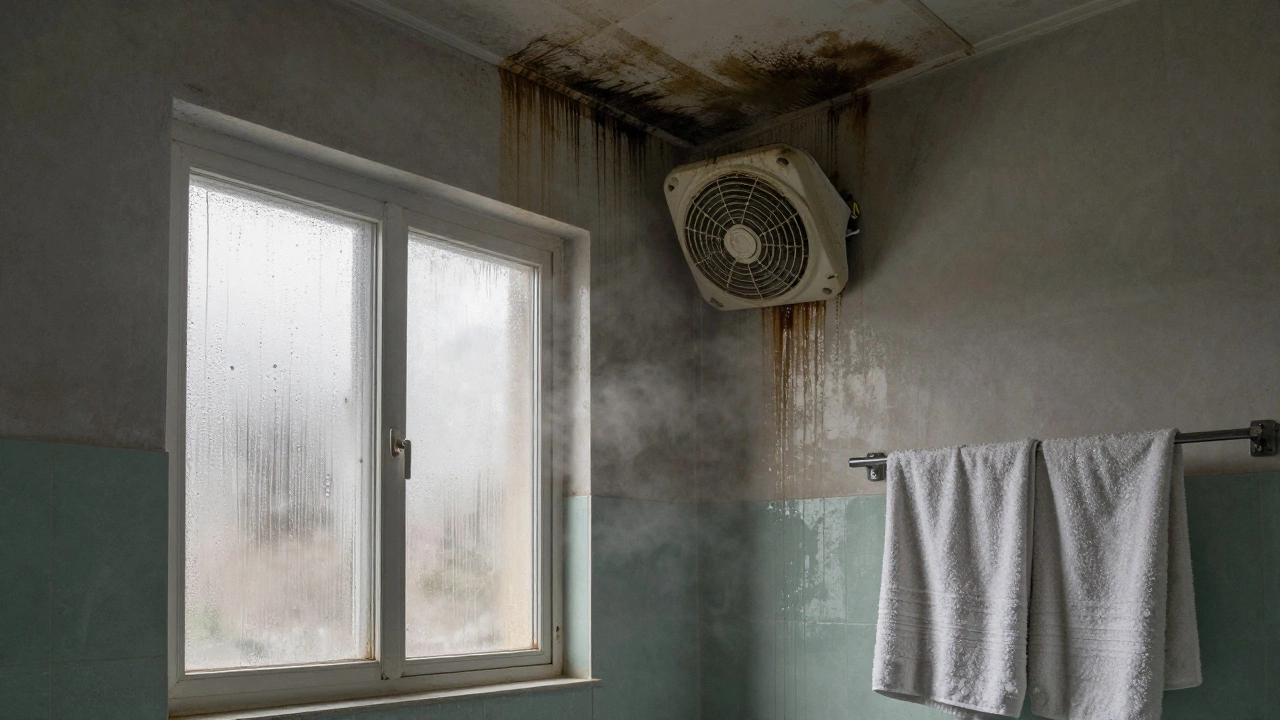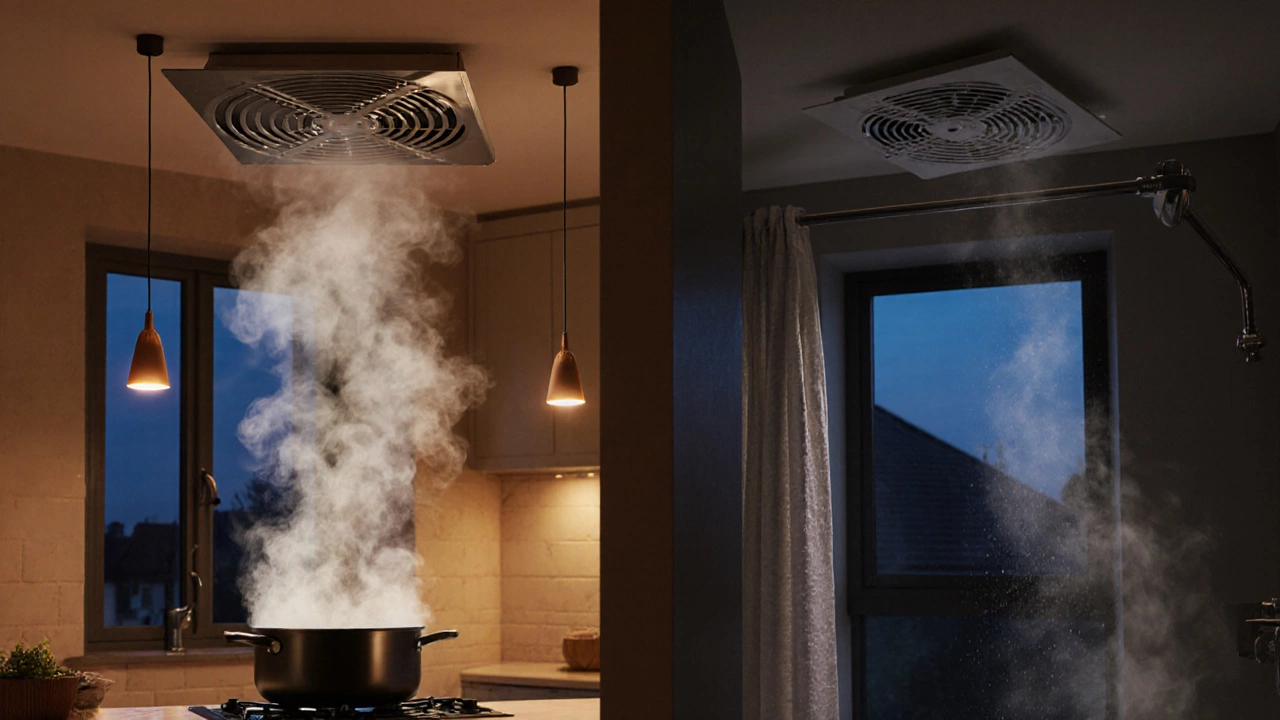
- 20 Aug 2024
- Gideon Thornton
- 0
Extractor fans play an often underestimated role in our daily comfort, yet they're vital in maintaining a clean and healthy indoor air environment. Whether you're in a kitchen bustling with culinary activity, or a bathroom where steam from hot showers can quickly turn to mold, these fans help keep moisture and odors at bay.
However, when the time comes to install or repair these handy devices, it's crucial to lean on the expertise of professionals. Doing so not only ensures the job is done correctly, but it also safeguards the wellbeing of your home or workspace.
In this guide, we'll uncover the essentials of what makes extractor fans indispensable. We'll walk through the steps of finding a skilled professional to handle installation tasks, and provide insights into choosing the fan that suits your needs and budget. Dive into this exploration to make informed decisions that stand the test of time.
- Understanding the Need for Extractor Fans
- Identifying Qualified Installers
- Selecting the Right Extractor Fan
- Installation and Repair Costs
- Maintenance Tips for Longevity
Understanding the Need for Extractor Fans
Extractor fans are pivotal in maintaining the quality of life inside homes and workplaces, helping to keep air free from unwanted moisture and odors. Often installed in bathrooms and kitchens, these devices work tirelessly in the background, ensuring that excess humidity and cooking fumes do not stay trapped within our interiors. Moist environments are breeding grounds for mold and mildew, which can damage structures and pose health risks. By effectively removing moisture-laden air, extractor fans protect against these potentially harmful conditions and contribute significantly to a healthy indoor environment.
The decision to install an extractor fan should not be an afterthought. It might surprise many to know that the right extractor fan can considerably influence your energy bills. Consider the workings of a kitchen where cooking generates a great deal of steam and smoke. The constant effort of inserting and extracting air efficiently helps to maintain lower energy consumption. Today's modern extractor fans come with energy-efficient motors and features that adjust the speed based on necessity, ensuring optimal performance while conserving power.
Another compelling reason to invest in a reliable extractor fan is the impact it has on improving air quality. Poor ventilation can lead to a buildup of VOCs (Volatile Organic Compounds), which are emitted as gases from certain solids or liquids, including cleaning products, paints, and fuels. Studies suggest that indoor air can be two to five times more polluted than outdoor air. A well-functioning extractor fan helps keep these harmful compounds at bay, continually refreshing the air cycle.
According to the Environmental Protection Agency, "Proper ventilation with outside air can help reduce indoor air pollutants." Keeping this in mind, ensuring that your home is equipped with the right ventilation solutions is crucial for your family's health.
It’s not just about health and comfort; proper ventilation also preserves your property. An extractor fan helps mitigate the risk of structural damage caused by excess moisture. For example, it prevents peeling paint and wallpaper, stretching the lifespan of finishes. Over time, accumulated moisture can compromise the integrity of wooden structures, leading to costly repairs. By investing in a good quality extractor fan, you make a proactive choice to protect your home’s framework.
Deciding on the correct extractor fan entails understanding your specific needs. It includes considering the size of the space, the amount of airflow required, and the specific conditions that need addressing. Many homeowners underestimate the significance of this step only to find their spaces inadequately ventilated. Thus, choosing a fan matching your needs guarantees effective moisture and odor control.
To better illustrate the importance of selecting the right fan, here’s a simple comparison to look at:
| Room Type | Recommended Air Changes per Hour |
|---|---|
| Bathroom | 8-12 |
| Kitchen | 15-30 |
The examples in this table highlight how different spaces have varying ventilation requirements. Knowing such data can guide you in choosing an extractor fan that meets the demands of its environment, ensuring efficient and lasting performance.
Identifying Qualified Installers
Choosing the right professional to install your extractor fan can seem daunting, but with a little know-how, you can make a confident decision. First, it's important to recognize the significance of having a qualified installer. An experienced professional ensures the installation is safe, efficient, and compliant with local regulations. This is not just about getting the fan on the wall; it involves understanding electrical connections and potentially integrating with existing ventilation systems. So, how do you go about finding such an individual?
Start by seeking recommendations. Word of mouth is incredibly valuable. Ask friends, family, or colleagues if they have recently undertaken a similar project and who they used. Often, firsthand experiences provide the most reliable insight. You can also search online for customer reviews and ratings. Websites like Angie's List or HomeAdvisor aggregate reviews which can help inform your choices. However, be mindful of ensuring these reviews appear genuine and numerous enough to indicate reliability.
Another step is checking professional credentials and certifications. Ideally, an installer should have a relevant trade certification or be a member of a professional body such as the Electrical Contractors' Association. This demonstrates that they have undergone training and adhere to industry standards. You can verify their credentials through the respective professional bodies, which often have online directories or verification tools.
Don't forget to conduct an interview or at least have a detailed conversation with the potential installer. Ask direct questions about their experience with extractor fan installation. It's okay to ask for specifics, like how they dealt with previous challenging installs. A seasoned professional will appreciate your due diligence and will be candid about their past work. You should also feel free to request references from prior clients. Speaking directly to previous customers can provide insight into their reliability and work ethic.
"The best integrator is one who will sit down with you, explore your needs and budget, and tailor their service accordingly." - George Morse, Home Improvement Expert
Licensing is a crucial factor. Always make sure your chosen installer is licensed to perform electrical work in your area. Licensing laws can vary significantly, so it's worth understanding the requirements in your locality. And remember, licensed professionals are also required to have liability insurance, which offers protection during unexpected circumstances.
Lastly, ask for a written estimate before any work begins. This should detail all costs, including labor, parts, and potential extras. Having everything on paper protects both parties and minimizes misunderstandings. Be wary of significantly low quotes, as they might indicate a lack of experience or hidden fees. Instead, find a balance between cost and expertise.
Remember, investing time to find the right professional leads to better outcomes and peace of mind. Your extractor fan installation is more than just a service—it's an improvement to ensure the comfort and safety of your space.

Selecting the Right Extractor Fan
Choosing the right extractor fan for your space is akin to picking out the perfect tool for a job—it ensures efficiency, effectiveness, and peace of mind. Whether you're tackling the dampness in a humid bathroom or trying to dispel cooking odors from a busy kitchen, selecting an appropriate fan is paramount. Begin by identifying the room's size and peculiar needs. A larger bathroom with a full bath, for instance, will produce more steam and hence require a fan with higher extraction capacity than a smaller, auxiliary powder room. Similarly, a kitchen where daily cooking takes place might demand an extractor with a stronger air change rate to efficiently clear smoke and odors.
When evaluating extractor fans, attention to noise level is another critical consideration. Measured in sones or decibels, the sound of the fan can range from a tranquil whisper to a distracting hum. A quiet fan—rated under one sone or approximately 40 decibels—could significantly improve your quality of life, particularly in spaces where conversation and relaxation happen. A slight increase in noise may be tolerable in utility spaces, but in living areas, the best choice often leans toward silence. As a rule of thumb, always check the manufacturer's specifications regarding noise levels before putting your trust in a certain model.
Energy efficiency can't be overlooked, especially with the rising awareness around sustainable choices. Some extractor fans are equipped with energy-saving features that not only reduce electricity consumption but also cut down on utility bills. Search for models that carry an Energy Star rating. This certification indicates that the unit uses approximately 20 percent less energy compared to standard varieties. Using less energy isn't just about savings and efficiency; it's also about playing a responsible part in environmental stewardship. The thoughtful decision of going for an energy-efficient fan aligns with broader ecological and economic trends.
Features and Functions
Modern extractor fans boast an array of features designed to cater to specific needs, beyond simple vigilant air movement. Timers and humidity sensors allow the fan to operate only when necessary, adding convenience and more energy savings. Humidity sensors, in particular, are shrewd additions—automatically triggering ventilation when moisture levels soar, then shutting off once equilibrium resumes. This smart solution implies less thinking about turning the fan on and off, leaving moisture control on autopilot. Additionally, models equipped with integrated LED lighting can provide essential illumination while offering energy efficiency.According to the Home Ventilating Institute, "Ventilating fans can be up to 80 percent more efficient with modern DC motors compared to old AC motor designs."Last but not least, consider the installation type. Some fans are suitable for wall mounting, some for ceiling installation, and others for window placement. While ceiling fans excel in pulling rising moisture and steam, wall or window models may suit spaces where overhead installation is impractical. Always assess whether a potential purchase aligns with your space's physical constraints. With the right extractor fan in place, you can breathe easier, maintain a pleasant environment, and enjoy potential savings—all rolled into one straightforward investment.
Installation and Repair Costs
Understanding the expenses involved in the installation and repair of an extractor fan helps homeowners plan their budget more effectively. On average, having a professional install an extractor fan ranges between $150 to $500. This price variation largely depends on the complexity of the installation. For instance, if your space requires additional electrical wiring or ductwork, you might expect the costs to edge towards the higher end. Installers often charge by the hour, with rates ranging from $50 to $100 per hour, which can further influence total costs depending on the intricacy of the task.
Repairing an existing fan is an alternative that many homeowners consider when a fan starts showing signs of wear, such as unusual noises or reduced efficiency. The repair costs can significantly vary, typically ranging from $80 to $250, depending on the nature of the fault and the availability of replacement parts. When a minor fix is needed, such as replacing a faulty switch, it might fall closer to the lower end, whereas more extensive repairs require not only parts but labor that can increase the overall bill.
According to HomeAdvisor, a popular home improvement website, "While some DIY enthusiasts might consider installing an extractor fan on their own, opting for a professional installation guarantees adherence to safety standards and building codes."
For those considering new installations, purchasing the fan itself is an essential factor. Basic models start around $30 for a small bathroom fan, whereas high-end, energy-efficient models designed for large kitchens can exceed $400. Homeowners often balance upfront installation costs and long-term savings, weighing factors like energy efficiency and warranty benefits. It's worthwhile digging into product reviews and ratings, assuring you're investing strategically.
Assessing the cost effectiveness of maintaining versus replacing a fan isn't merely a financial issue. The performance of an extractor fan significantly affects both moisture control and air quality. For some, upgrading might ultimately prove to be the most pragmatic and economic decision, thus virtually eliminating future repeated repair costs and enhancing home or office air quality conditions. Consider creating a maintenance plan with regular inspections to identify potential issues before they necessitate costly repairs.

Maintenance Tips for Longevity
To ensure your extractor fan keeps performing optimally and lasts for years to come, a bit of routine maintenance goes a long way. Regular care not only helps in maintaining airflow efficiency but also prevents potential fire hazards caused by dust and grease buildup. Start by understanding the basic anatomy of your extractor fan. Most models comprise a cover, a fan blade, and a duct system leading outside. By familiarizing yourself with these components, it becomes easier to identify where dust might be accumulating.
Spring-cleaning enthusiasts might be pleased to hear that extractor fans benefit from a thorough cleaning twice a year. Begin by turning off the power to the fan. Remove the cover gently, often done by unscrewing or simply clipping it off. Now, here's where your household items work wonders; a mixture of warm soapy water or a gentle detergent is usually enough to clean the fan cover and blades. Remember, avoid dumping water directly on any electrical component. Dry the pieces thoroughly before reassembling. For fans in kitchens, especially those above stoves, pay special attention to greasy residues that might have found a home on them.
Beyond regular cleaning, it's essential to check the tightness and balance of the fan blades. A wobbly, noisy fan might indicate that screws need tightening or the fan blades are out of balance. This is something you should address promptly to avoid more significant issues down the line. Oddly enough, a balanced blade helps maintain energy efficiency as well, saving a few extra bucks on electricity bills. Also, if you notice your fan making strange noises even after such checks, consulting a professional might be the wise route.
For those eager to stay ahead in the maintenance game, consider jotting reminders to inspect your fan's efficiency. Does it seem to be taking longer to remove odors or steam? It might be time to investigate deeper. Filter replacements often sneak up on you, particularly in fans used heavily in cooking areas. Some modern extractor fans come equipped with reusable filters—blessings in disguise—as these require only a rinse and dry cycle before they’re good as new. For those with disposable filters, sticking to replacement schedules ensures operational efficiency.
Speaking of modern appliances, technology has introduced extractor fans equipped with sensors that auto-regulate based on the air quality. These smart fans, while reducing the manual maintenance needed, still appreciate a cleaning partner now and then. After all, technology can only take so much before needing a nudge in the right direction. Investing in such fans might initially seem a costlier option, but the ease of maintenance and enhanced efficiency often outweigh initial costs. If you’re interested, brands such as Panasonic and Broan offer models that users have hailed for their longevity and smart functionality.
Engage with your extractor fan the same way you would with any appliance you rely on. As former U.S. President Lyndon B. Johnson once said, "The most important reason for setting goals is to entice you to become the person it takes to achieve them." By setting a goal to maintain your extractor fan, you fortify your home’s wellness and become a more responsible homeowner in the process. Because let's face it, having an efficiently running system not only adds value to your home but makes every breath intaken fresher, and every cooking process a more delightful and enjoyable experience.




